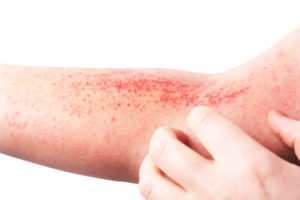Navigating Atopic Dermatitis Treatment: Strategies for Managing Skin Health

Atopic dermatitis, commonly known as eczema, is a chronic skin condition that affects millions worldwide. Characterized by itchy, inflamed, and often red skin, atopic dermatitis can be both uncomfortable and distressing for those who experience it. Fortunately, advancements in atopic dermatitis treatment have made it possible to manage the symptoms effectively, improving the quality of life for many sufferers. This article explores the various strategies for atopic dermatitis treatment, offering insight into how individuals can achieve relief and maintain healthier skin.
Understanding Atopic Dermatitis
Atopic dermatitis is more than just dry skin; it’s a complex immune-mediated condition that often runs in families and is frequently associated with other atopic disorders, such as asthma and hay fever. The condition typically manifests in early childhood and can vary in severity and duration. For some, it’s a minor irritation; for others, it can significantly impact daily life.
Key Strategies for Atopic Dermatitis Treatment
1. Moisturizing Regularly
One of the foundational steps in atopic dermatitis treatment is to keep the skin well-moisturized. Using ointments, creams, and lotions can help lock in moisture, protect the skin barrier, and reduce itching and redness. It’s essential to choose products free from fragrances, dyes, and other irritants that can exacerbate symptoms.
2. Topical Medications
Topical corticosteroids are commonly prescribed to reduce inflammation and ease symptoms. However, their use must be carefully managed due to potential side effects, especially with long-term use. Newer non-steroidal topical medications, like calcineurin inhibitors and phosphodiesterase-4 (PDE4) inhibitors, offer alternative options for managing inflammation with fewer side effects.
3. Systemic Treatments
For moderate to severe cases that don’t respond well to topical treatments, systemic medications may be necessary. These can include oral drugs that suppress the immune system, biologic drugs that target specific parts of the immune response, and phototherapy, which uses ultraviolet light to reduce skin inflammation.
4. Trigger Identification and Avoidance
An integral part of atopic dermatitis treatment is identifying and avoiding triggers that can worsen symptoms. Common triggers include dry skin, irritants (like soaps and detergents), allergens, stress, and certain foods. Keeping a symptom diary can help identify potential triggers for individual cases.
5. Skin Infection Management
People with atopic dermatitis are more prone to skin infections due to the compromised skin barrier. Treating infections promptly with antibiotics, antiviral, or antifungal medications is crucial to prevent worsening of dermatitis symptoms.
6. Lifestyle and Home Remedies
Simple changes in daily routines and home environments can significantly impact atopic dermatitis management. These include taking shorter, cooler showers, using a humidifier to keep air moist, wearing soft, breathable clothing, and maintaining a regular skincare routine.
Finding the Right Treatment Plan
Atopic dermatitis treatment is highly individualized, depending on the severity of the condition, the age of the patient, and their overall health. Working closely with a dermatologist or healthcare provider is essential to find the most effective treatment strategy. It may take some trial and error to discover what works best for each individual, and treatments may need to be adjusted over time as the condition changes.
The Importance of Education and Support
Living with atopic dermatitis can be challenging, not just physically but also emotionally and socially. Education about the condition and its management, along with support from family, friends, and support groups, can make a significant difference in the lives of those affected. Understanding that atopic dermatitis is a chronic condition that requires ongoing management is key to maintaining skin health and overall well-being.
Conclusion
Effective atopic dermatitis treatment requires a comprehensive approach that includes medical interventions, lifestyle adjustments, and support. With the right strategies, individuals with atopic dermatitis can manage their symptoms, improve their skin health, and lead a comfortable, fulfilling life. As research continues to advance, there is hope for even more effective treatments on the horizon, offering further relief for those affected by this challenging skin condition.